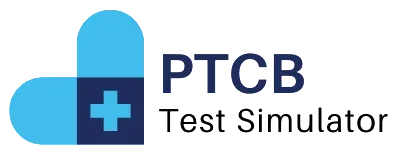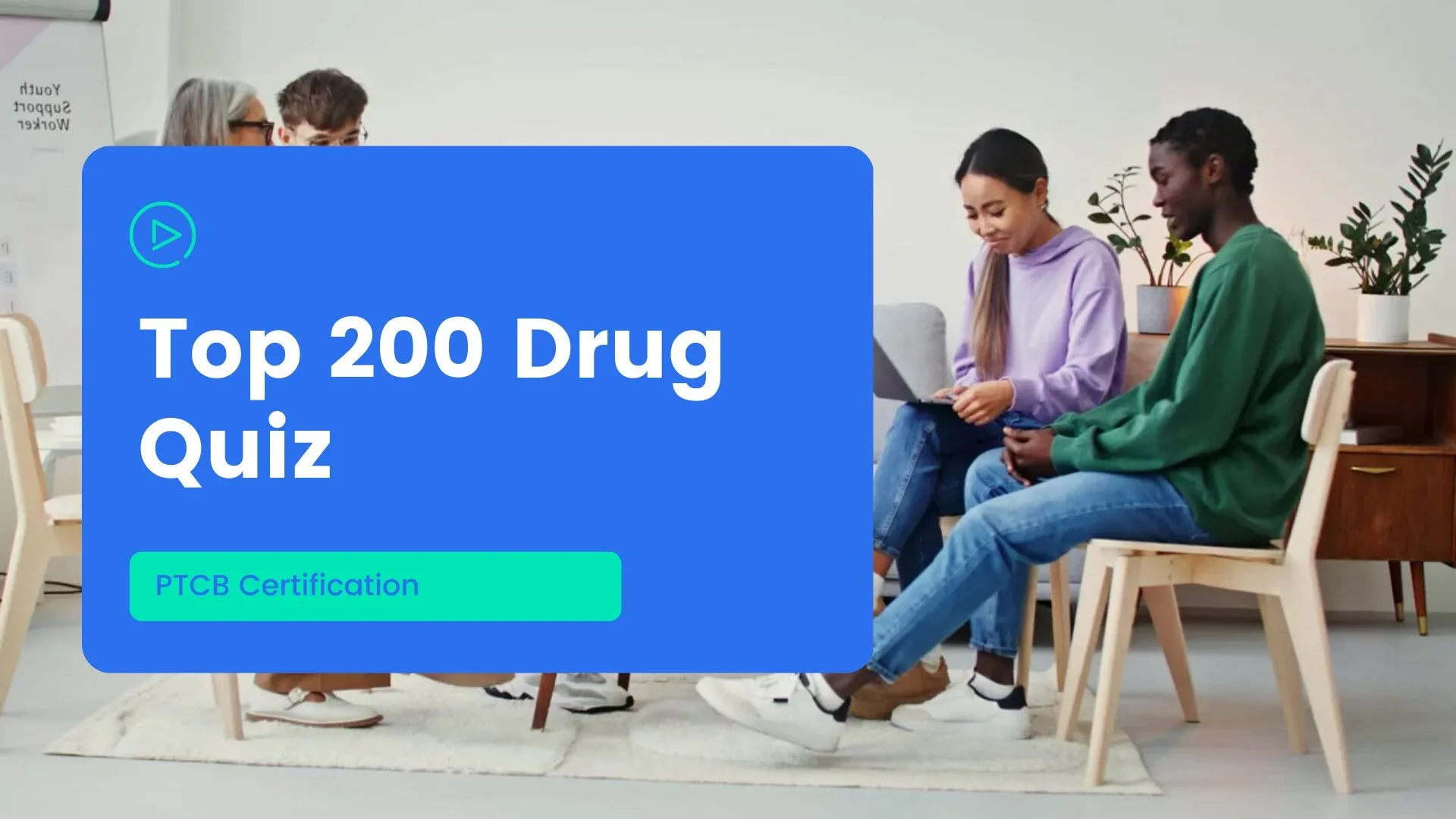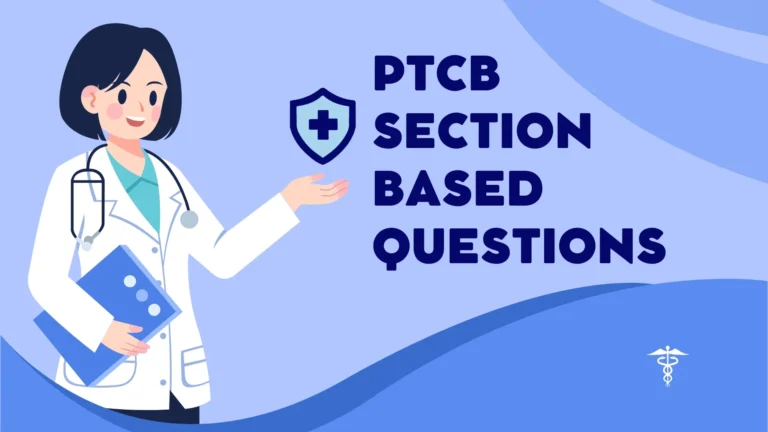Top 200 Drugs Quiz
PTCB certification requires pharmacists to pass the Top 200 Drugs quiz in order to get the pharmacy technician certification. Pharmacy technologists and other health professionals need to have a thorough understanding of medication, its uses, and its interactions. This knowledge is based on familiarity with the top 200 drugs, an important aspect of pharmacy education and practice.
This article will help you prepare for the Pharmacy Technician Certification Board PTCB practice test and master the Top 200 Drugs quiz. The information provided will be invaluable to anyone who is interested in the pharmacy field, whether they are a new student or an experienced professional looking to update their knowledge.
Try More Practice Tests for PTCE
Understanding the Top 200 Drugs Quiz :
The term “top 200 drugs” refers to a list of the most commonly prescribed medications in the United States. Compiled based on factors such as sales, prevalence of use, and therapeutic importance, this list serves as a benchmark for pharmaceutical education and practice.
Proficiency in the top 200 drugs is essential for pharmacy technicians and other healthcare professionals. It enables them to accurately identify medications, understand their indications and contraindications, and communicate effectively with patients and other members of the healthcare team.
How to Pass the Top 200 Drugs Quiz for PTCB
- Memorization Techniques: Employ mnemonic devices, flashcards, and repetition to commit drug names, classifications, and indications to memory.
- Understanding Drug Classes: Grouping drugs by class helps establish patterns and facilitates comprehension. Focus on similarities and differences within drug classes to streamline learning.
- Clinical Application: Connect drug knowledge to real-world scenarios. Understand why certain medications are prescribed for specific conditions and how they impact patient outcomes.
- Interactive Learning: Utilize online quizzes, practice exams, and interactive study tools to reinforce learning and identify areas for improvement.
PTCB Exam Sample
The PTCB Exam Sample is a vital resource for pharmacy technician candidates preparing for certification. PTCB Practice Test is designed to assess knowledge across various domains, including medication dispensing, pharmacy law, and top 200 drug information, the PTCB Exam sample provides valuable insight into the structure and content of the official exam.
Preparing for the PTCB TEST
- Review Content Outlines: Familiarize yourself with the content outlines provided by the PTCB, which delineate the knowledge areas and competencies tested on the exam.
- Utilize Practice Materials: Access practice exams, study guides, and review courses specifically tailored to the PTCB exam. These resources simulate the testing environment and help identify strengths and weaknesses.
- Focus on Weak Areas: Allocate extra time and resources to topics where you demonstrate less proficiency. Targeted review and practice can bolster confidence and performance.
- Simulate Exam Conditions: Mimic the conditions of the actual exam during practice sessions. Time yourself, adhere to exam rules, and minimize distractions to simulate a realistic testing environment.
Importance of Top 200 Drugs Quiz in PTCB Test
The top 200 drugs and PTCB exam preparation are inherently interconnected. Proficiency in drug knowledge is a cornerstone of pharmacy practice and is directly assessed in the PTCB exam. Therefore, integrating the two is essential for success.
- Incorporate Drug Knowledge into Study Sessions: Integrate top 200 drugs review into your overall PTCB study plan. Dedicate specific time slots to drug memorization, classification review, and clinical application.
- Utilize Drug-Based Practice Questions: Seek out practice questions that incorporate drug-related scenarios and knowledge. This approach reinforces both top 200 drugs mastery and PTCB exam readiness.
- Apply Drug Knowledge to PTCB Domains: Recognize the relevance of drug information across various domains tested on the PTCB exam. Whether it’s medication dispensing, pharmacy calculations, or pharmacology, drug knowledge serves as a foundational element.
- Stay Updated: Be mindful of new drug approvals, withdrawals, and safety alerts. Stay abreast of developments in the pharmaceutical landscape to ensure your knowledge remains current and relevant.
Mastering the top 200 drugs quiz and excelling on the PTCB practice test are pivotal milestones in the journey toward becoming a proficient pharmacy technician.
List of Top 200 Drugs – Pharmacy Technician Exam
- Acetaminophen with codeine (Tylenol #3): Pain relief for moderate to severe pain.
- Acyclovir (Zovirax): Antiviral for herpes simplex virus infections and chickenpox.
- Albuterol (ProAir HFA, Ventolin HFA): Bronchodilator for asthma and COPD.
- Alendronate (Fosamax): Bisphosphonate for osteoporosis.
- Allopurinol (Zyloprim): Reduces uric acid levels for gout and kidney stones.
- Alprazolam (Xanax): Benzodiazepine for anxiety disorders and panic disorder.
- Amiodarone (Cordarone): Antiarrhythmic for irregular heartbeats.
- Amitriptyline (Elavil): Tricyclic antidepressant for depression and neuropathic pain.
- Amlodipine (Norvasc): Calcium channel blocker for hypertension and angina.
- Amoxicillin (Amoxil): Antibiotic for bacterial infections.
- Amoxicillin/clavulanate (Augmentin): Antibiotic combination for various bacterial infections.
- Ampicillin (Principen): Antibiotic for bacterial infections.
- Aripiprazole (Abilify): Atypical antipsychotic for schizophrenia and bipolar disorder.
- Atazanavir (Reyataz): Antiretroviral for HIV infection.
- Atorvastatin (Lipitor): Statin for high cholesterol and cardiovascular risk reduction.
- Azithromycin (Zithromax): Macrolide antibiotic for bacterial infections.
- Baclofen (Lioresal): Muscle relaxant for muscle spasticity.
- Benazepril (Lotensin): ACE inhibitor for hypertension and heart failure.
- Bevacizumab (Avastin): Monoclonal antibody for cancer treatment.
- Budesonide (Pulmicort): Inhaled corticosteroid for asthma and COPD.
- Buprenorphine/naloxone (Suboxone): Used for opioid dependence treatment.
- Clopidogrel (Plavix): Antiplatelet agent for preventing blood clots.
- Codeine (Tylenol with codeine): Opioid analgesic for pain relief and cough suppression.
- Cyclobenzaprine (Flexeril): Muscle relaxant for muscle spasms.
- Dabigatran (Pradaxa): Anticoagulant for preventing blood clots.
- Dapagliflozin (Farxiga): SGLT2 inhibitor for type 2 diabetes.
- Darunavir (Prezista): Protease inhibitor for HIV infection.
- Dexamethasone (Decadron): Corticosteroid for inflammation and immune suppression.
- Diazepam (Valium): Benzodiazepine for anxiety disorders, muscle spasms, and seizures.
- Digoxin (Lanoxin): Cardiac glycoside for heart failure and atrial fibrillation.
- Diltiazem (Cardizem): Calcium channel blocker for hypertension and angina.
- Diphenhydramine (Benadryl): Antihistamine for allergies and sleep aid.
- Donepezil (Aricept): Cholinesterase inhibitor for Alzheimer’s disease.
- Doxazosin (Cardura): Alpha blocker for hypertension and benign prostatic hyperplasia.
- Doxycycline (Vibramycin): Tetracycline antibiotic for bacterial infections.
- Duloxetine (Cymbalta): SNRI antidepressant for depression and neuropathic pain.
- Efavirenz (Sustiva): Non-nucleoside reverse transcriptase inhibitor for HIV infection.
- Enalapril (Vasotec): ACE inhibitor for hypertension and heart failure.
- Entecavir (Baraclude): Antiviral for hepatitis B infection.
- Enoxaparin (Lovenox): Low molecular weight heparin for preventing blood clots.
- Escitalopram (Lexapro): SSRI antidepressant for depression and anxiety disorders.
- Bupropion (Wellbutrin): Antidepressant and smoking cessation aid.
- Buspirone (Buspar): Anxiolytic for anxiety disorders.
- Captopril (Capoten): ACE inhibitor for hypertension and heart failure.
- Carvedilol (Coreg): Beta-blocker for hypertension and heart failure.
- Cefaclor (Ceclor): Antibiotic for bacterial infections.
- Cefadroxil (Duricef): Antibiotic for bacterial infections.
- Cefdinir (Omnicef): Antibiotic for bacterial infections.
- Cefixime (Suprax): Antibiotic for bacterial infections.
- Ceftriaxone (Rocephin): Antibiotic for bacterial infections.
- Celecoxib (Celebrex): NSAID for pain and inflammation.
- Cephalexin (Keflex): Antibiotic for bacterial infections.
- Chlorpheniramine/hydrocodone (Tussionex): Antitussive and antihistamine for cough and cold symptoms.
- Ciprofloxacin (Cipro): Fluoroquinolone antibiotic for bacterial infections.
- Citalopram (Celexa): SSRI antidepressant for depression and anxiety disorders.
- Clarithromycin (Biaxin): Macrolide antibiotic for bacterial infections.
- Clindamycin (Cleocin): Antibiotic for bacterial infections.
- Clobetasol (Temovate): Topical corticosteroid for skin conditions.
- Clonazepam (Klonopin): Benzodiazepine for seizure disorders and panic disorder.
- Clonidine (Catapres): Alpha-2 adrenergic agonist for hypertension and ADHD.
- Esomeprazole (Nexium): Proton pump inhibitor for GERD and peptic ulcers.
- Estrogens (Premarin): Hormone replacement therapy for menopausal symptoms.
- Estradiol (Estrace): Estrogen hormone for hormone replacement therapy and menopausal symptoms.
- Ethinyl estradiol/norgestimate (Ortho Tri-Cyclen): Combination oral contraceptive.
- Ezetimibe (Zetia): Cholesterol absorption inhibitor for hypercholesterolemia.
- Famciclovir (Famvir): Antiviral for herpes simplex and herpes zoster infections.
- Febuxostat (Uloric): Xanthine oxidase inhibitor for gout.
- Fentanyl (Duragesic): Opioid analgesic for pain management.
- Finasteride (Proscar): 5-alpha reductase inhibitor for benign prostatic hyperplasia and male pattern baldness.
- Fluconazole (Diflucan): Antifungal medication for fungal infections.
- Fluticasone (Flovent): Inhaled corticosteroid for asthma and COPD.
- Furosemide (Lasix): Loop diuretic for edema and hypertension.
- Gabapentin (Neurontin): Anticonvulsant and neuropathic pain medication.
- Gemfibrozil (Lopid): Fibrate medication for hypertriglyceridemia.
- Glimepiride (Amaryl): Sulfonylurea for type 2 diabetes.
- Glipizide (Glucotrol): Sulfonylurea for type 2 diabetes.
- Glyburide (Diabeta): Sulfonylurea for type 2 diabetes.
- Haloperidol (Haldol): First-generation antipsychotic for schizophrenia and acute psychosis.
- Heparin (Hep-Lock): Anticoagulant for preventing blood clots.
- Hydrochlorothiazide (Microzide): Thiazide diuretic for hypertension and edema
- Hydromorphone (Dilaudid): Opioid analgesic for moderate to severe pain.
- Hydroxyzine (Atarax): Antihistamine and anxiolytic for anxiety and itching.
- Ibuprofen (Advil, Motrin): NSAID for pain relief and inflammation.
- Imatinib (Gleevec): Tyrosine kinase inhibitor for certain types of cancer.
- Insulin aspart (NovoLog): Rapid-acting insulin analog for diabetes management.
- Insulin detemir (Levemir): Long-acting insulin analog for diabetes management.
- Insulin glargine (Lantus): Long-acting insulin analog for diabetes management.
- Insulin lispro (Humalog): Rapid-acting insulin analog for diabetes management.
- Ipratropium (Atrovent): Anticholinergic bronchodilator for COPD and asthma.
- Irbesartan (Avapro): Angiotensin II receptor blocker for hypertension and diabetic nephropathy.
- Isosorbide dinitrate (Isordil): Nitrate medication for angina and heart failure.
- Ketoconazole (Nizoral): Antifungal medication for fungal infections.
- Lacosamide (Vimpat): Anticonvulsant medication for partial-onset seizures.
- Lamotrigine (Lamictal): Anticonvulsant medication for epilepsy and bipolar disorder.
- Lansoprazole (Prevacid): Proton pump inhibitor for GERD and peptic ulcers.
- Lantus (Insulin glargine): Long-acting insulin analog for diabetes management.
- Latanoprost (Xalatan): Prostaglandin analog for glaucoma.
- Levetiracetam (Keppra): Anticonvulsant medication for epilepsy.
- Levothyroxine (Synthroid): Thyroid hormone replacement for hypothyroidism.
- Lidocaine (Lidoderm): Topical anesthetic for pain relief.
- Linezolid (Zyvox): Oxazolidinone antibiotic for bacterial infections, including MRSA.
- Lisinopril (Prinivil, Zestril): ACE inhibitor for hypertension, heart failure, and diabetic nephropathy.
- Lithium (Eskalith, Lithobid): Mood stabilizer for bipolar disorder.
- Lopinavir/ritonavir (Kaletra): Protease inhibitor combination for HIV infection.
- Loratadine (Claritin): Second-generation antihistamine for allergies.
- Losartan (Cozaar): Angiotensin II receptor blocker for hypertension and diabetic nephropathy.
- Lovastatin (Mevacor): Statin for lowering cholesterol levels.
- Lurasidone (Latuda): Atypical antipsychotic for schizophrenia and bipolar disorder.
- Meclizine (Antivert): Antihistamine for motion sickness and vertigo.
- Medroxyprogesterone (Provera): Progestin hormone for contraception and hormone therapy.
- Meloxicam (Mobic): NSAID for pain relief and inflammation.
- Memantine (Namenda): NMDA receptor antagonist for Alzheimer’s disease.
- Metformin (Glucophage): Biguanide for type 2 diabetes.
- Methadone (Dolophine): Opioid agonist for pain management and opioid dependence treatment.
- Methotrexate (Rheumatrex): Disease-modifying antirheumatic drug (DMARD) for rheumatoid arthritis and certain cancers.
- Methylphenidate (Ritalin): Central nervous system stimulant for ADHD and narcolepsy.
- Metoclopramide (Reglan): Dopamine antagonist for gastroesophageal reflux disease (GERD) and gastroparesis.
- Metolazone (Zaroxolyn): Thiazide-like diuretic for hypertension and edema.
- Metoprolol (Lopressor, Toprol XL): Beta-blocker for hypertension, angina, and heart failure.
- Metronidazole (Flagyl): Antibiotic and antiprotozoal medication for bacterial and parasitic infections.
- Mirtazapine (Remeron): Noradrenergic and specific serotonergic antidepressant (NaSSA) for depression and anxiety disorders.
- Montelukast (Singulair): Leukotriene receptor antagonist for asthma and allergic rhinitis.
- Morphine (MS Contin): Opioid analgesic for moderate to severe pain.
- Naproxen (Aleve): NSAID for pain relief and inflammation.
- Nebivolol (Bystolic): Beta-blocker for hypertension and heart failure.
- Nelfinavir (Viracept): Protease inhibitor for HIV infection.
- Niacin (Niaspan): B vitamin (vitamin B3) supplement for hyperlipidemia.
- Nifedipine (Procardia): Calcium channel blocker for hypertension and angina.
- Nitroglycerin (Nitrostat): Nitrate medication for angina and heart failure.
- Olanzapine (Zyprexa): Atypical antipsychotic for schizophrenia and bipolar disorder.
- Olopatadine (Patanol): Antihistamine and mast cell stabilizer for allergic conjunctivitis.
- Omeprazole (Prilosec): Proton pump inhibitor for GERD and peptic ulcers.
- Ondansetron (Zofran): 5-HT3 receptor antagonist for nausea and vomiting.
- Orlistat (Alli, Xenical): Lipase inhibitor for weight loss.
- Oseltamivir (Tamiflu): Antiviral medication for influenza.
- Oxycodone (OxyContin): Opioid analgesic for moderate to severe pain.
- Pantoprazole (Protonix): Proton pump inhibitor for GERD and peptic ulcers.
- Paroxetine (Paxil): SSRI antidepressant for depression, anxiety disorders, and PTSD.
- Penicillin (Penicillin VK): Antibiotic for bacterial infections.
- Phenobarbital (Luminal): Barbiturate anticonvulsant for seizures and sedation.
- Phentermine (Adipex-P): Sympathomimetic amine for weight loss.
- Pioglitazone (Actos): Thiazolidinedione for type 2 diabetes.
- Pregabalin (Lyrica): Anticonvulsant and neuropathic pain medication.
- Primaquine (Primaquine): Antimalarial medication.
- Prochlorperazine (Compazine): Dopamine antagonist for nausea and vomiting.
- Promethazine (Phenergan): Antihistamine and dopamine antagonist for allergies, nausea, and sedation.
- Propofol (Diprivan): Intravenous sedative-hypnotic agent for anesthesia.
- Propranolol (Inderal): Beta-blocker for hypertension, angina, and migraine prophylaxis.
- Quetiapine (Seroquel): Atypical antipsychotic for schizophrenia, bipolar disorder, and depression.
- Raltegravir (Isentress): Integrase inhibitor for HIV infection.
- Ramipril (Altace): ACE inhibitor for hypertension, heart failure, and diabetic nephropathy.
- Ranitidine (Zantac): H2 receptor antagonist for GERD and peptic ulcers.
- Rasagiline (Azilect): Monoamine oxidase inhibitor (MAOI) for Parkinson’s disease.
- Risperidone (Risperdal): Atypical antipsychotic for schizophrenia, bipolar disorder, and irritability associated with autism.
- Ritonavir (Norvir): Protease inhibitor for HIV infection.
- Rivaroxaban (Xarelto): Oral anticoagulant for preventing blood clots.
- Ropinirole (Requip): Dopamine agonist for Parkinson’s disease and restless legs syndrome.
- Rosuvastatin (Crestor): Statin for lowering cholesterol levels.
- Saquinavir (Invirase): Protease inhibitor for HIV infection.
- Sertraline (Zoloft): SSRI antidepressant for depression, anxiety disorders, and OCD.
- Sildenafil (Viagra): Phosphodiesterase type 5 inhibitor for erectile dysfunction.
- Simvastatin (Zocor): Statin for lowering cholesterol levels.
- Sitagliptin (Januvia): Dipeptidyl peptidase-4 (DPP-4) inhibitor for type 2 diabetes.
- Solifenacin (Vesicare): Antimuscarinic agent for overactive bladder.
- Spironolactone (Aldactone): Potassium-sparing diuretic for hypertension, heart failure, and edema.
- Sumatriptan (Imitrex): Serotonin receptor agonist for migraine and cluster headaches.
- Tacrolimus (Prograf): Calcineurin inhibitor for preventing organ rejection in transplant recipients.
- Tamoxifen (Nolvadex): Selective estrogen receptor modulator (SERM) for breast cancer.
- Tamsulosin (Flomax): Alpha-1 blocker for benign prostatic hyperplasia (BPH).
- Temazepam (Restoril): Benzodiazepine for insomnia.
- Tenofovir (Viread): Nucleotide reverse transcriptase inhibitor (NRTI) for HIV infection and hepatitis B.
- Terazosin (Hytrin): Alpha-1 blocker for hypertension and BPH.
- Terbinafine (Lamisil): Antifungal medication for fungal skin infections.
- Testosterone (AndroGel): Androgen hormone replacement therapy for hypogonadism.
- Tetracycline (Sumycin): Antibiotic for bacterial infections.
- Thalidomide (Thalomid): Immunomodulatory agent for multiple myeloma and leprosy.
- Thiamine (Vitamin B1): Essential nutrient for energy metabolism and nerve function.
- Timolol (Timoptic): Non-selective beta blocker for glaucoma and hypertension.
- Tiotropium (Spiriva): Anticholinergic bronchodilator for COPD.
- Tizanidine (Zanaflex): Alpha-2 adrenergic agonist for muscle spasms.
- Tolterodine (Detrol): Antimuscarinic agent for overactive bladder.
- Topiramate (Topamax): Anticonvulsant medication for epilepsy and migraine prevention.
- Tramadol (Ultram): Opioid analgesic for moderate to severe pain.
- Trazodone (Desyrel): Serotonin antagonist and reuptake inhibitor (SARI) for depression and insomnia.
- Triamcinolone (Kenalog): Corticosteroid medication for inflammation and allergy symptoms.
- Triazolam (Halcion): Benzodiazepine for short-term treatment of insomnia.
- Tricyclic antidepressants (Amitriptyline, Imipramine): Antidepressant medication for depression and certain anxiety disorders.
- Truvada (Emtricitabine/tenofovir): Combination antiretroviral therapy for HIV infection.
- Tadalafil (Cialis): Phosphodiesterase type 5 inhibitor for erectile dysfunction and pulmonary arterial hypertension.
- Valacyclovir (Valtrex): Antiviral medication for herpes simplex virus infections.
- Valsartan (Diovan): Angiotensin II receptor blocker for hypertension and heart failure.
- Vancomycin (Vancocin): Glycopeptide antibiotic for bacterial infections, including MRSA.
- Venlafaxine (Effexor): SNRI antidepressant for depression, anxiety disorders, and panic disorder.
- Verapamil (Calan): Calcium channel blocker for hypertension, angina, and arrhythmias.
- Vildagliptin (Galvus): Dipeptidyl peptidase-4 (DPP-4) inhibitor for type 2 diabetes.
- Vincristine (Oncovin): Vinca alkaloid chemotherapy medication for cancer.
- Warfarin (Coumadin): Vitamin K antagonist anticoagulant for preventing blood clots.
- Zidovudine (Retrovir): Nucleoside reverse transcriptase inhibitor (NRTI) for HIV infection.
- Zolpidem (Ambien): Non-benzodiazepine hypnotic for insomnia.
- Zonisamide (Zonegran): Anticonvulsant medication for epilepsy.


